Continued Insights From Our Community-of-the-Whole Approach
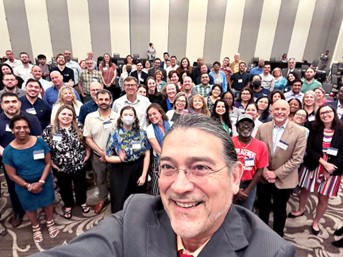
Attending the State Data Center, Census Information Center, and Data Dissemination Specialist annual training conference in Charlotte, North Carolina.
Here’s an insight to think about that emerged from my travel engagements: Public service can take many forms. We at the U.S. Census Bureau embrace our public service mission to provide quality data on our nation’s people, places and economy by collecting and publishing statistical data.
But collecting, processing and then releasing statistical data followed by a ‘mic drop’ is never enough. We also undertake concerted communications and outreach efforts to help stakeholders and the public understand the availability, strengths and limitations of the data we provide. This further empowers data users to help their communities assess needs and govern, plan, and develop economic and other policies.
All the while, public feedback on our data – what’s good, not-so-good and what’s missing – is critical to guide the enhancement of our products and to fill gaps to address unmet needs. It’s essential to advance the utility of our enormous data assets to public users and potential users. After all, the public pays for our treasure trove of information. It should benefit from it, too.
To do this, the Census Bureau employs significant infrastructure devoted to data dissemination and user engagement. Our data dissemination specialists, tribal representatives and many other staff actively reach out and work with stakeholders; federal, state and local elected officials; and the public. They demonstrate how to access our products, and even conduct one-on-one sessions and webinars tailored to specific user needs and data applications.
Our subject matter experts meet with and secure input on how to improve our data products through initiatives like Statistical Product First. Our data dissemination infrastructure also includes State Data Centers, Census Information Centers, Federal Statistical Research Data Centers and even instructional videos on the Census Bureau’s YouTube channel. We also illustrate the value of our data via our Newsroom; America Counts: Stories Behind the Numbers; Stats for Stories; and our Infographics & Visualizations webpage.
But even these efforts are not enough. Our Census Bureau leadership also engages with the public to specifically offer the value proposition of our enormous data assets. We’ve been actively traveling the nation to meet with both current and potential data users – folks who don’t use our data (but could benefit tremendously from tapping into its power to provide insights) as well as those who use our data but don’t realize it.
Our public engagement work to communicate the value of our data is a continuous journey. It is also a necessary step in establishing and strengthening local communities’ trust in us. Trust is a precursor to creating true partnerships where communication and information flow freely to promote the public good while encouraging participation in our three censuses and over 130 surveys. With all this in mind, let me tell you a bit about what we’ve been doing to serve the public and advance our continuous engagement priority.
First, let’s talk data. This has been a busy year here at the Census Bureau. Since my last update, we’ve released a slew of new data and updates to our data tools: our new Vintage 2023 population estimates by age, sex, race and Hispanic origin; the Community Resilience Estimates for Puerto Rico; important data from the 2023 Survey of Income and Program Participation; additional data from the 2022 Economic Census; and much more. We also announced plans to modernize our Current Population Survey.
And of course, our preparations for the 2030 Census continue apace. We’ve released our initial strategies for preparing for the next decennial census. And we announced the scope of operations and test sites for the 2026 Census Test. Our redesigned 2030 Census website, www.census.gov/2030Census, provides more details of all the work we’re doing.
Through it all, we’re maintaining our commitment to seek out different perspectives and actively engage the public in our work. As we get closer to the 2030 Census, it’s imperative that we continue to engage stakeholders, partners and local communities across America.
In the map above, the size of each circle is proportional to the total number of events attended in the general area represented by the circle from January 2022 through July 2024. In some cases, events in nearby cities are combined and represented by a single circle based on the scale of the map (e.g., events in Omaha, NE and Bellevue, NE are represented by a single circle).
Our community-of-the-whole effort to accomplish our mission is bearing fruit. Thank you to everyone who’s shared their voice and perspective with us during our outreach efforts over the past few months:
Michigan
I was honored to speak to Latinx graduates of my alma mater, the University of Michigan, at La Celebración Latina. I hope these students will bring their talents and perspectives to the Census Bureau in their future professional endeavors!
While in Michigan, I also spoke to the Returning Citizens Community College Initiative at Wayne State University about the Census Bureau’s mission and vast datasets and tools, as well as our commitment to excellence and equity in our work. And I met with representatives of the Arab Community Center for Economic and Social Services (ACCESS) to hear about their research on racial-ethnic identity.
Idaho
In Boise, I spoke at the National Travel Monitoring Exposition and Conference about how Census Bureau data are critical to understanding America’s travel and transportation needs. For example, after the COVID-19 pandemic and disasters like the collapse of the Francis Scott Key Bridge, our population, demographic, economic and commuting profiles can help communities and emergency managers respond and plan recovery efforts.
I also met with the Idaho Broadband Office to discuss our work with the National Telecommunications and Information Administration to gather and analyze federal data that inform the implementation of the Digital Equity and ACCESS BROADBAND acts.
I met with staff members for Idaho’s Congressional delegation and Boise City Council Member Jimmy Hallyburton to discuss the value of our data. I was also pleased to meet with legislators from the Idaho Council on Indian Affairs to discuss how we work with tribal nations now and for the 2030 Census.
Colorado
I continued to create connections with institutes of higher education at Colorado State University and the University of Colorado Anschutz Medical Campus. I also met with Janine Davidson, president of Metropolitan State University, and her staff to discuss our data products and potential partnership. At each venue, I met with students to listen to and understand their stories and aspirations. I encouraged them to ‘think big’ and consider joining the Census Bureau and become a part of our incredible mission. I reminded the students of the value of bringing their own diverse perspectives to their work and noted that we need voices like theirs at our agency.
Minnesota
On a trip to the Twin Cities, I attended a data session on rural data equity and geography. I highlighted our data tools that can serve the needs of rural communities, and shared how we’re working to improve data collection in those communities – including by seeking to innovate the way we geolocate residential addresses in rural and remote locations.
I met with advocates from a wide variety of Minnesotan communities, including members of the African American, tribal, disability and Latino communities. I thank them for their engagement and insightful conversations!
I also met with several groups who coordinate the state’s decennial census activities. We’re seeking closer connections to better understand the rich, diverse needs that will allow us to best reach communities across the nation in the next census.
I especially appreciated the chance to listen to feedback from Minnesotan Hmong legislators, community leaders and the Minnesotan Asian Pacific Caucus on the importance of disaggregated race and ethnicity data.
California
I was able to meet with several state agencies in California. At the Office of Data and Innovation, we talked about how data science is powering insights and innovations. I also met with staff from Gov. Gavin Newsom’s office and the Office of Community Partnerships and Strategic Communications to discuss planning and engagement for the 2030 Census.
I sat down with advocates for the disability and homeless communities about their insights into communicating with and enumerating individuals from these communities. Two-way conversations like these help us to produce accurate, relevant statistics. I also had a Q&A with the National League of Cities about the importance and value of Census Bureau data.
Finally, I met with staff from the Census Bureau’s Los Angeles Regional Office. It’s always such a pleasure to meet with my fellow Census Bureau colleagues face-to-face. Every time I do, I learn even more about the important work they do in the field and hear useful feedback about how we can improve.
Georgia
I attended the annual conference of the American Association for Public Opinion Research. As I do at all conferences I attend where we sponsor a booth, I took a turn manning ours. It was great to connect with some of my colleagues from the Atlanta Regional Office.
While there, I was able to observe one of our field representatives from the regional office conduct a survey. Field work is foundational to all Census Bureau data, and I’m so appreciative of our field staff’s hard work and dedication.
I also had the opportunity to meet with staff from the Atlanta University Center Data Science Initiative. I’m so proud the Census Bureau is supporting opportunities for new graduates to pursue careers in data science, so that they can grow census data programs that describe and serve richly diverse communities.
Nevada
I was honored to speak at the League of United Latin American Citizens conference. I talked about how data from the 2020 Census shows that our nation’s Hispanic/Latino population is growing – reaching 62.1 million people in 2020, an increase of more than 11.6 million since the 2010 Census – and experiencing notable demographic changes. I also shared how we’re preparing for the 2030 Census and our plans for implementing revised federal race and ethnicity standards.
North Carolina
I was so pleased to speak to members of our State Data Centers, Census Information Centers and Data Dissemination Training Branch at their conference in Charlotte. These invaluable partners assist in making Census Bureau data available locally in every state. By helping people understand and work with the data the Census Bureau collects, they ensure that our data can be used for research, planning and decision-making across the nation. Their feedback allows for a better understanding of the data needs in their state and local communities.
I also met with rural partners and organizations about our 2030 Census preparations. They shared context about the challenges faced by rural North Carolinians, and highlighted state and local outreach and organizing efforts from 2020 that may help other communities across the U.S.
Maryland
In Baltimore, I spoke to philanthropy and advocacy groups about our plans for the 2026 Census Test. This is the first of two major field tests, and our first major opportunity to test new and enhanced activities we would like to implement for the 2030 Census to achieve the goal of a complete and accurate population count.
But these visits aren’t the only way we’re working to bring diverse perspectives to our work. We are also continuing our work with advisory panels that provide invaluable expertise and insights.
In addition to our regular meetings with the Census Scientific Advisory Committee and the National Advisory Committee, July marked the first meeting of the new 2030 Census Advisory Committee. I so appreciate the members of this committee volunteering their time and expertise to help us devise strategies to increase census awareness, reduce barriers to response, and enhance the public’s trust and willingness to respond.
And as always, we continue to collaborate with our colleagues across the federal government. Over the past several months, I’ve met with representatives from the Bureau of Labor Statistics, the Department of Housing and Urban Development, and the Internal Revenue Service to discuss how we can work together to improve the data we provide. I’ve also met with lawmakers on Capitol Hill, including the Congressional Hispanic Caucus, to discuss how we’re seeking to expand their constituents’ access to our data.
Thank you for following along as our work continues at the Census Bureau. I’ll keep updating you as I connect with even more communities and organizations across the country!
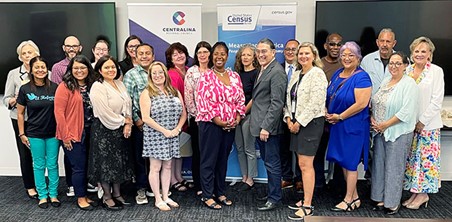
Holding a roundtable discussion with key rural 2020 Census partners in North Carolina.

Speaking at the 2024 Census Collaborative Convening in Baltimore, Maryland, hosted by Census Counts, Census Equity Initiative, and the Funders’ Committee for Civic Participation.
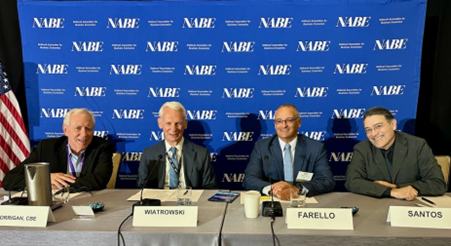
Participating in a panel discussion at the National Association for Business Economics Conference with William Wiatrowski, Deputy Commissioner, Bureau of Labor Statistics; Paul Farello, Associate Director for International Economics, Bureau of Economic Analysis; and Michael W. Horrigan, CBE, W.E. Upjohn Institute.

Speaking at the University of Michigan Latinx graduation ceremony.

Meeting with Hmong legislators and community members in Minnesota.

Meeting with tribal leaders and tribal serving organizations in Minnesota.

Visiting the Census Bureau booth at the League of United Latin American Citizens’ conference in Las Vegas, Nevada.

Attending a lecture at Metropolitan State University in Fort Collins, Colorado.
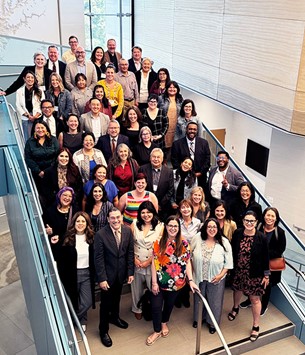
Meeting with the staff from the Governor’s Office, Philanthropy California, and the Office of Community Partnerships and Strategic Communications in Sacramento, California.
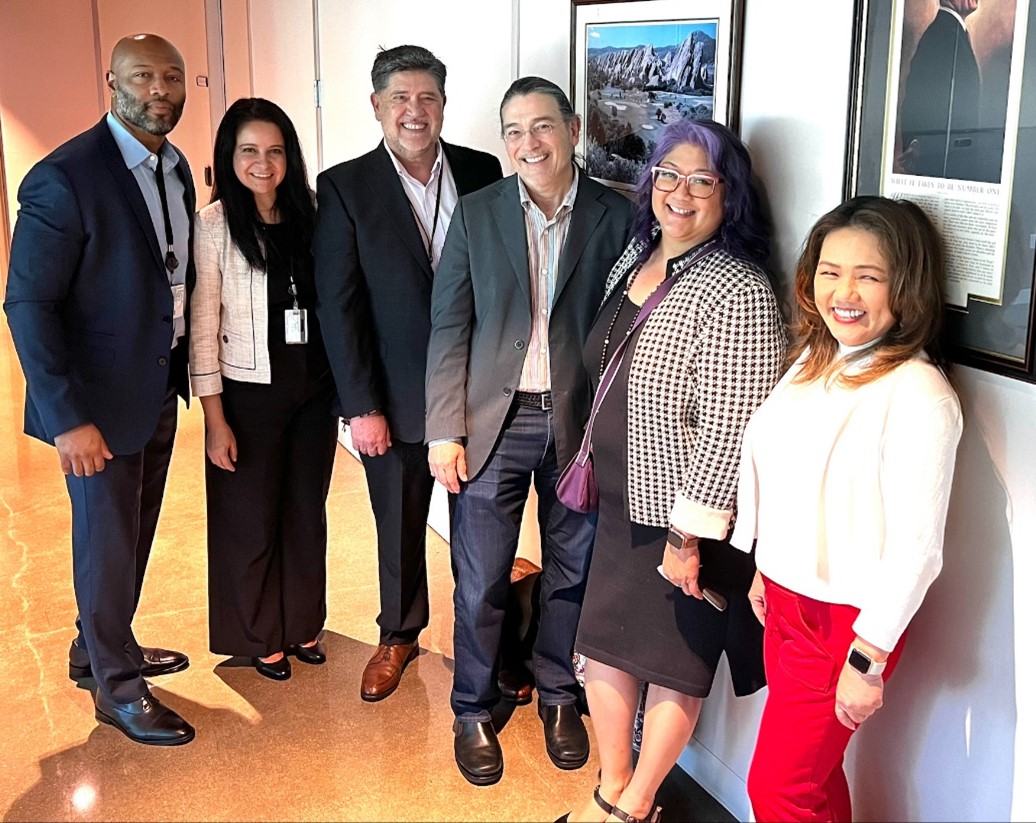
Meeting with Census Bureau staff at the Los Angeles Regional Office.
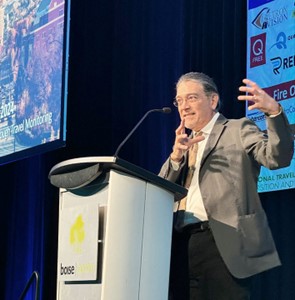
Speaking at the National Travel Monitoring Exposition & Conference in Boise, Idaho.

Meeting with Census Bureau staff at the Atlanta Regional Office.
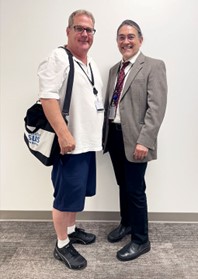
Observing Field Representative Jim Hannabach conduct a survey in Georgia.




